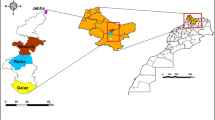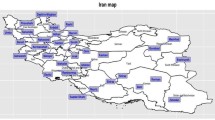Abstract
Microsatellite markers were developed for Cannabis sativa L. (marijuana) to be used for DNA typing (genotype identification) and to measure the genetic relationships between the different plants. Twelve different oligonucleotide probes were used to screen an enriched microsatellite library of Cannabis sativa in which 49% of the clones contained microsatellite sequences. Characterization of microsatellite loci in Cannabis revealed that GA/CT was the most abundant class of the isolated microsatellites representing 50% overall followed by GTT/CAA, AAG/TTC, and GAT/CTA representing 16%, 15%, and 10%, respectively. Eleven polymorphic STR markers were developed, three derived from dinucleotide motifs and eight from trinucleotide motifs. A total of 52 alleles were detected averaging 4.7 alleles/locus. The expected heterozygosity of the eleven loci ranged between 0.368 and 0.710 and the common probability of identical genotypes was 1.8×10−7. The loci identified 27 unique profiles of the 41 Cannabis samples. The 11 microsatellite markers developed in this study were found to be useful for DNA typing and for assessing genetic relatedness in Cannabis.



Similar content being viewed by others
References:
Drug Identification Bible (DIB) (2001). Amera-Chem, Grand Junction, CO, USA.
Mechoulam R (1970). Marijuana chemistry. Science 168:1159–1166.
Siniscalco Gigliano G (2001). Cannabis sativa L.- Botanical problems and molecular approaches in forensic investigations; Forensic Sci Rev. 13:1.
Jacob HJ, Lindpaintner K, Lincoln SE, Kusumi K, Bunker RK, Mao YP, Ganten D, Dzau VJ, Lander ES (1991). Genetic mapping of a gene causing hypertensive rat. Cell 67,213–224.
Litt M, Luty JA (1989). A hypervariable microsatellite revealed by in vitro amplification of a dinucleotide repeat within the cardiac muscle actin gene. Am. J. Hum. Genet. 44,397–401.
Edwards A, Civitello A, Hammond HA, Caskey CT (1991). DNA typing and genetic mapping with trimeric and tetrameric tandem repeats. Am. J. Hum. Genet. 49,746–756.
Weber JL, May PE (1989). Abundant class of human DNA polymorphisms which can be typed using the polymerase chain reaction. Am. J. Hum. Genet. 44,388–396.
Levinson G, Gutman GA (1987). High frequencies of short frame shifts in poly-CA/TG tandem repeats borne by bacteriophage M13 in Escherichia coli K-12. Nucleic Acids Res 15:5323–5338.
Strand M, Prolla TA, Liskay RM, Peters TD (1993). Destabilization of tracts of simple repetitive DNA in yeast by mutations affecting DNA mismatch repair. Nature, 365:274–276.
Wang Z, Weber JL, Zhong G, Tanksley SD (1994). Survey of plant short tandem DNA repeats. Theor Appl Genet, 88;1–6.
Morgante M, Olivieri AM (1993). PCR-amplified microsatellites as markers in plant genetics. Plant J. 3:175–182.
Powell W, Morgante M, Andre C, Hanafey M, Vogel J, Tingey S, Rafalski A (1996a). The comparison of RFLP, RAPD, AFLP and SSR (microsatellite. markers for germplasm analysis). Mol Breed 2:225–238.
Powell W, Machray GC, Provan J (1996b). Polymorphism revealed by simple sequence repeats. Trends Plant Sci, 1:215–222.
Jones CJ, Edwards KJ, Castaglione S, Windield MO, Sala F, Van De Wiel C, Bredemeijer G, Vosman B, Mathes M, Daly A, Brettschneider R, Bettini P, Buiatti M, Maestri E, Malcevschi A, Marmiroli N, Aert R, Volckaert G, Rueda J, Linacero R, Vasquez A, Karp A (1997). Reproducibility testing of RAPD, AFLP and SSR markers in plants by a network of European laboratories. Mol. Breed. 3:381–390.
Morgante M, Rafalski A, Biddle P, Tingey S, Olivieri AM (1994). Genetic mapping and variability of seven soybean simple sequence repeat loci. Genome, 37:763–769.
Ashkenazi V, Chani E, Lavi U, Levy D, Hillel J, Veilleux RE (2001). Development of microsatellite markers in potato and their use in phylogenetic and fingerprinting analyses. Genome 44:50–62.
Brown SM, Hopkins MS, Mitchell SE, Senior ML, Wang TY, Duncan RR, Gonzalez-Candelas F, Kresovich S (1996). Multiple methods for the identification of polymorphic simple sequence repeats (SSRs) in sorghum [Sorghum bicolor (L.) Moench]. Theor. Appl. Genet. 93:190–198.
Ayres NM, McClung AM, Larkin PD, Bligh HFJ, Jones CA, Park WD (1997). Microsatellite and a single nucleotide polymorphism differentiate apparent amylose classes in an extended pedigree of US rice germplasm. Theor. Appl. Genet. 94:773–781.
Goldstein, D.B., Linares, A.R., Cavalli-Sforza, L.L., and Feldman, M.W. (1995). An evaluation of genetic distances for use with microsatellite loci. Genetics, 139:463–471.
Siniscalco Gigliano G, Di Finizo A, Caputo P, Cozzolino S (1998). Cannabis fingerprints by using random amplified length polymorphism DNA (RAPD). Delpinoa ns, 37:35.
Coyle HM, Ladd C, Palmbach T, Lee HC (2001). The green revolution: botanical contributions to forensics and drug enforcement. CMJ. 42(3):340–345.
Coyle HM, Shutler G, Abrams S, Hanniman J, Neylon S, Ladd C, Palmbach T, Lee HC (2003). A simple DNA extraction method for marijuana sample used in amplified fragment length polymorphism (AFLP) analysis. J Forensic Sci, 48(2): 343–347.
Toth G, Gaspari Z, Jurka J (2000). Microsatellites in different eukaryotic genomes: survey and analysis. Genomes Res, 10:967–981.
Gilmore S, Peakall R, Robertson J (2003). Short tandem repeat (STR) DNA markers are hypervariable and informative in Cannabis sativa: implications for forensic investigations. Forensic Sci Int 131:65–74.
Hsieh H-M, Hou R-J, Tasi L-C, Wei C-S, Liy S-W, Huang L-H, Kuo Y-C, Linacre A, Lee JC-I (2003). A highly polymorphic STR locus in Cannabis sativa. Forensic Sci Int 131:53–58.
Edwards KJ, Backer JHA, Daly A, Jones C, Karp A (1996). Microsatellite libraries enriched for several microsatellite sequences in plants. Biotechniques: 20:5
Roy R, Steffens DL, Gartside B, Jang GY, Brumbaugh JA (1996). Producing STR Locus Patterns from Bloodstains and other Forensic Samples using an Infrared Fluorescent Automated DNA sequencer. J Forensic Sci 41 (3)418–424.
Nei M (1987) Genetic distance and molecular phylogeny. In: Ryman N, Utter F (eds).Population genetics and fishery management. University of Washington Press, Seattle. pp. 193–223
Paetkau D, Calvert W, Stirling I, Strobeck C (1995). Microsatellite analysis of population structure in Canadian polar bears. Mol Ecol 4:347–354.
Saitou N, Nei M (1987). The neighbor-joining method: a new method for reconstructing phylogenetic trees. Mol. Biol. Evol., 4:406–425.
Cavalli-Sforza LL, Edwards AWF (1967). Phylogenetic analysis: models and estimation procedures. Evolution 21:550–570.
Felsenstein J (1985). Confidence limits on phylogenies: an approach using the bootstrap. Evolution 39:783–791.
Sokal R, Rohlf FJ (1995). Biometry. 3rd edn. W. H. Freeman, New York.
Rohlf FJ (1998). NTSYS: numerical taxonomy and multivariate analysis system, version 2.1. Applied Biostatistics Setauket, N.Y.
Cornuet JM, Piry S (2000). TreeMaker v1.0.1: a Windows program for making NJ dendrograms and assigning a bootstrap value between the nodes. Computer software distributed by the authors.
Cordeiro GM, Taylor GO, Henry RJ (2000). Characterization of microsatellite markers from sugarcane (Saccharum sp.), a highly polyploid species. Plant Sci 155:161–168.
Rossetto M, McLauchlan A, Harriss FC, Henry RJ, Baverstock PR, Lee LS, Maguire TL, Edwards KJ (1999). Abundance and polymorphism of microsatellite markers in the tea tree (Melaleuca alternifolia, Myrtaceae). Theor Appl Genet 98:1091–1098.
Jakše J, Kindlhofer K, Javornik B (2001). Assessment of genetic variation and differentiation of hop genotypes by microsatellite and AFLP markers. Genome, 44:773–782.
Maguire, T.L., Edwards, K.J., Saenger, P., and Henry, R. (2000). Characterization and analysis of microsatellite loci in a mangrove species, Avicennia marina (Forsk.) Vierh. (Avicenniaceae). Theor Appl Genet, 101:279–285.
Butler JM (2001). Forensic DNA typing. Academic Press, CA, USA
Diwan N, Cregan PB (1997). Automated sizing of fluorescent-labeled simple sequence repeat (SSR) markers to assay genetic variation in soybean. Theor. Appl. Genet., 95:723–733.
Ahmad, M (2002). Assessment of genomic diversity among wheat genotypes as determined by simple sequence repeats. Genome, 45:646–651.
Codit R, Hubbel SP (1991) Abundance and DNA sequence of 2-base repeat regions in tropical tree genomes. Genome 34:66–71.
Senior ML, Murphy JP, Goodman MM, Stuber CW (1998). Utility of SSRs for determining genetic similarities and relationships in maize using an agarose gel system. Crop Sci 38:1088–1098.
Yu J-K, Mangor J, Thompson L, Edwards KJ, Slabaugh MB, Knapp SJ (2002). Allelic diversity if simple sequence repeats among elite inbred line of cultivated sunflower. Genome, 45:652–660.
Acknowledgements.
This work is part of the Masters thesis of the first author at Florida International University, Miami, Florida. The authors would like to specially thank the Dubai Police Crime Laboratory in the United Arab Emirates for providing the financial support for this project and Drs Alan Meerow and Raymond Schnell at the USDA-ARS-SHRS laboratory in Miami, Florida for the use of their facilities and for helpful discussions and review of this manuscript. The authors also thank Jason Clayton at the USDA-ARS-SHRS laboratory for technical assistance and all the USDA staff at the genetic research lab in Miami, Florida. Finally, the authors thank Dr Heather Coyle of CSFSL, USA and Dr Gary Shutler of RCMP, Canada for providing the DNA samples and the AFLP information.
Author information
Authors and Affiliations
Corresponding author
Rights and permissions
About this article
Cite this article
Alghanim, H.J., Almirall, J.R. Development of microsatellite markers in Cannabis sativa for DNA typing and genetic relatedness analyses. Anal Bioanal Chem 376, 1225–1233 (2003). https://doi.org/10.1007/s00216-003-1984-0
Received:
Revised:
Accepted:
Published:
Issue Date:
DOI: https://doi.org/10.1007/s00216-003-1984-0




